Projection markovienne de processus stochastiques
Projection markovienne de processus stochastiques
Projection markovienne de processus stochastiques
You also want an ePaper? Increase the reach of your titles
YUMPU automatically turns print PDFs into web optimized ePapers that Google loves.
tel-00766235, version 1 - 17 Dec 2012<br />
(see [61, Ch.II,Sec.1]), implying that for any predictable process φt and for<br />
any T > 0:<br />
T <br />
E<br />
0 Rd T <br />
φtM(dtdy) = E<br />
0 Rd <br />
φtµ(dtdy) . (1.8)<br />
Ito semimartingales form a natural class of stochastic processes, sufficiently<br />
large for most applications and possessing various analytical properties<br />
which allow in particular the use of stochastic calculus [81, 61].<br />
An Ito semimartingale may be characterized by its local characteristic<br />
triplet (β,δ,µ), which may be seen as a path-<strong>de</strong>pen<strong>de</strong>nt generalization of the<br />
notionofLévy tripletforLévyprocesses. 1 Un<strong>de</strong>r someconditionsonthelocal<br />
characteristics of ξ, we will show that the Markovian projection X of ξ may<br />
then be constructed, as in Gyöngy [51], by projecting the local characteristics<br />
of ξ on its state. However, our construction differs from that of Gyöngy:<br />
we construct X as the solution of a martingale problem and ensure that this<br />
construction yields a Markov process X, characterized by its infinitesimal<br />
generator. This regularity of the construction will provi<strong>de</strong> a clear link between<br />
the mimicking process X and the corresponding forward equation and<br />
clarify the link between forward equations and Markovian projections.<br />
1.1.4 Stochastic differential equations and martingale<br />
problems<br />
To construct Markovian mimicking processes for ξ, we will need to construct<br />
solutions to a general ’Markovian-type’ stochastic differential equation with<br />
jumps, given by<br />
∀t ∈ [0,T], Xt = X0 +<br />
+<br />
t<br />
0<br />
<br />
t<br />
0<br />
y≤1<br />
b(u,Xu)du+<br />
yÑ(du dy)+<br />
t<br />
0<br />
t<br />
0<br />
Σ(u,Xu)dBu<br />
<br />
y>1<br />
yN(du dy),<br />
(1.9)<br />
where (Bt) is a d-dimensional Brownian motion, N is an integer-valued random<br />
measure on [0,T]×R d with compensator n(t,dy,Xt−)dt where<br />
(n(t, .,x),(t,x) ∈ [0,T] × R d ) is a measurable family of positive measures<br />
1 We refer to Jacod & Shiryaev [61, Chapter 4 Section 2] for a complete presentation.<br />
8




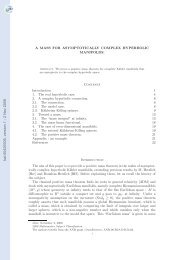
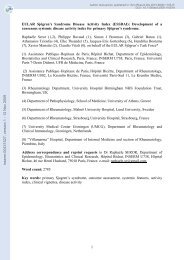

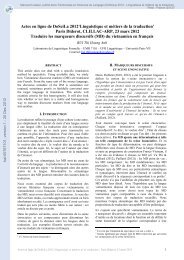
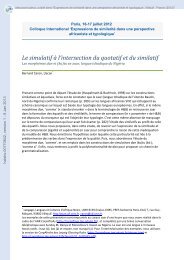
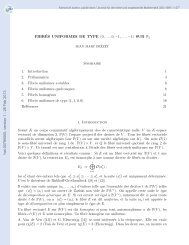
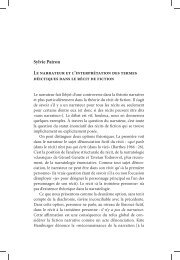
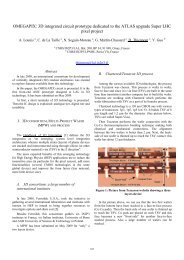
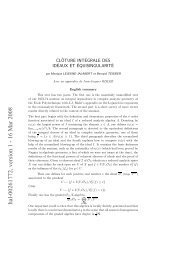
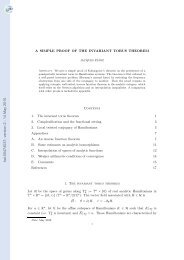
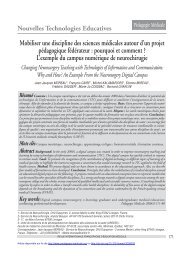

![[tel-00433556, v1] Relation entre Stress Oxydant et Homéostasie ...](https://img.yumpu.com/19233319/1/184x260/tel-00433556-v1-relation-entre-stress-oxydant-et-homeostasie-.jpg?quality=85)